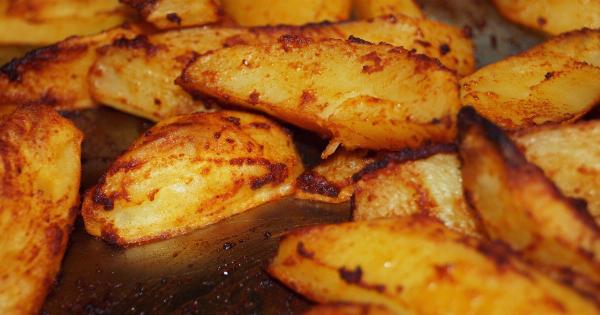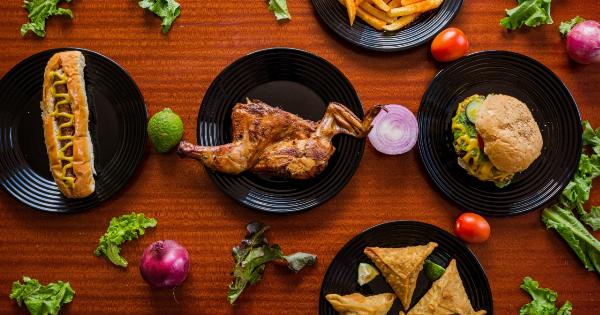Cravings for high-fat foods are a common phenomenon that many of us experience. Whether it’s devouring a slice of pizza or indulging in a decadent chocolate cake, our desire for fatty foods can sometimes feel uncontrollable.
While it’s easy to blame our lack of willpower or self-control, there is actually a scientific explanation behind these cravings. Recent research has uncovered the fascinating bowel-brain connection that plays a significant role in driving our appetite for high-fat foods.
Understanding Cravings
Cravings can be defined as intense desires for specific types of food. These desires are often felt as physical sensations and can be difficult to resist.
While cravings for different types of food vary among individuals, high-fat foods consistently rank high on the list. Understanding the science behind these cravings can help shed light on why our bodies seem to yearn for fatty, calorie-dense foods.
The Role of Evolution
Contrary to popular belief, cravings for high-fat foods are not solely a result of modern lifestyle or taste preferences. In fact, our evolutionary history plays a significant role in shaping these cravings.
Throughout human evolution, high-fat foods were rare and valuable sources of energy. Our ancestors needed these calorie-dense foods to survive in times of scarcity and famine. As a result, our bodies have evolved to seek out and crave high-fat foods as a survival mechanism.
The Gut-Brain Axis
The gut-brain axis is a bidirectional communication system between our gastrointestinal tract and our brain. The gut, often referred to as the “second brain,” contains millions of neurons that communicate with our central nervous system.
This connection between our gut and brain is facilitated by a complex network of nerves, hormones, and chemical messengers.
Gut Microbiota and Cravings
Recent studies have highlighted the role of our gut microbiota, which refers to the trillions of microorganisms that reside in our digestive system, in influencing our cravings.
The composition and diversity of our gut microbiota can impact our food preferences and cravings, particularly for high-fat foods. Research has shown that certain gut bacteria have the ability to influence our brain, affecting our appetite, mood, and cravings.
The Link to Hormones
Hormones play a crucial role in regulating our appetite and satiety. Ghrelin, often referred to as the “hunger hormone,” is released by the stomach and promotes hunger.
On the other hand, leptin, known as the “satiety hormone,” is released by fat cells and signals to the brain that we are full. Imbalances in these hormones can result in increased cravings, particularly for high-fat foods.
The Role of Inflammation
Inflammation in the body can also contribute to cravings for high-fat foods. Chronic inflammation, often caused by a poor diet and lifestyle habits, can disrupt the gut-brain axis and lead to dysregulation of appetite-related hormones.
This dysregulation can increase cravings for high-fat foods as a way to soothe and reduce inflammation in the body.
Stress and Emotional Eating
Stress and emotions can have a significant impact on our cravings for high-fat foods.
When we are stressed or experiencing negative emotions, our bodies release cortisol, also known as the “stress hormone.” Cortisol triggers cravings for high-fat, sugary foods as a way to provide comfort and alleviate stress. This emotional eating can become a coping mechanism, further reinforcing our cravings for high-fat foods.
Genetics and Dopamine
Genetics also play a role in our cravings for high-fat foods. Certain genes can influence our sensitivity to the taste and reward aspects of fatty foods.
Dopamine, a neurotransmitter associated with pleasure and reward, is released in response to consuming high-fat foods. Individuals with certain genetic variations may experience a heightened release of dopamine, leading to increased cravings for high-fat foods.
Breaking the Cycle
While cravings for high-fat foods may feel overwhelming, there are strategies to help break the cycle. One approach is to focus on consuming a balanced diet that includes healthy fats, such as those found in avocados, nuts, and olive oil.
Incorporating fiber-rich foods can also help regulate appetite and reduce cravings. Additionally, managing stress through techniques like mindfulness or exercise can help minimize emotional eating triggers.
Conclusion
Cravings for high-fat foods are driven by a complex interplay of evolutionary, physiological, and psychological factors.
The bowel-brain connection, influenced by our gut microbiota, hormones, inflammation, and genetics, all contribute to our desire for fatty, calorie-dense foods. By understanding the science behind these cravings, we can make informed choices and adopt healthier strategies to satisfy our appetite.






























